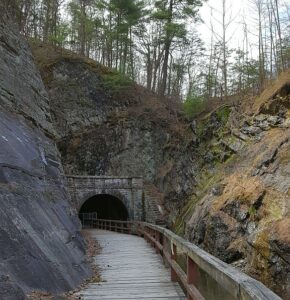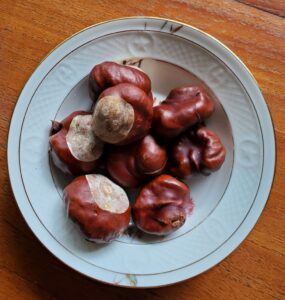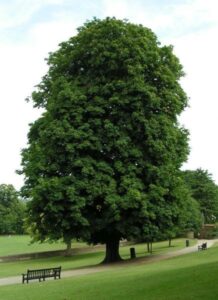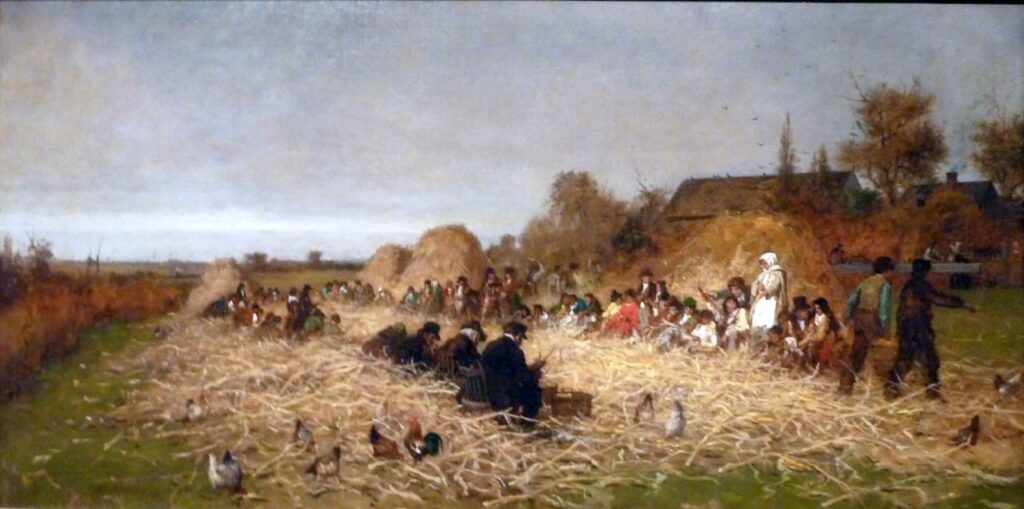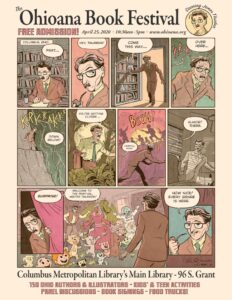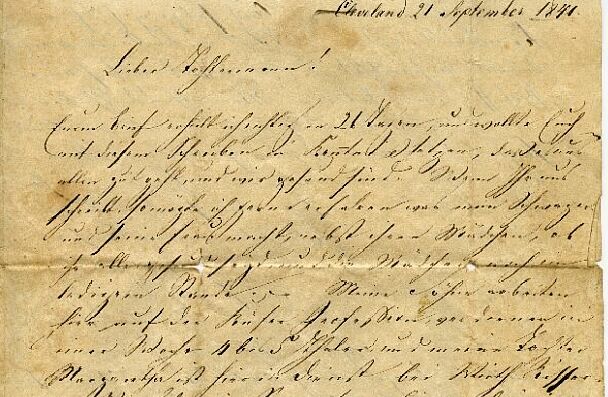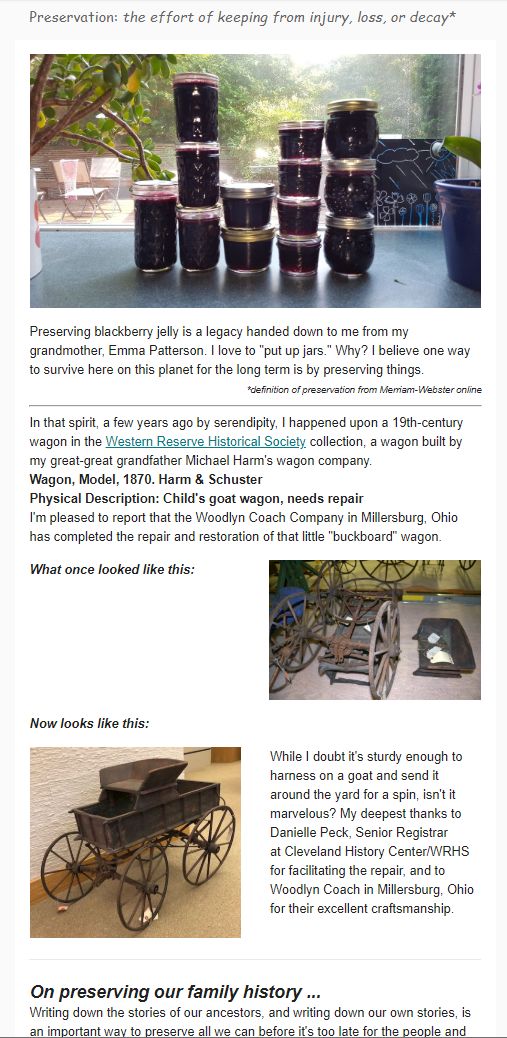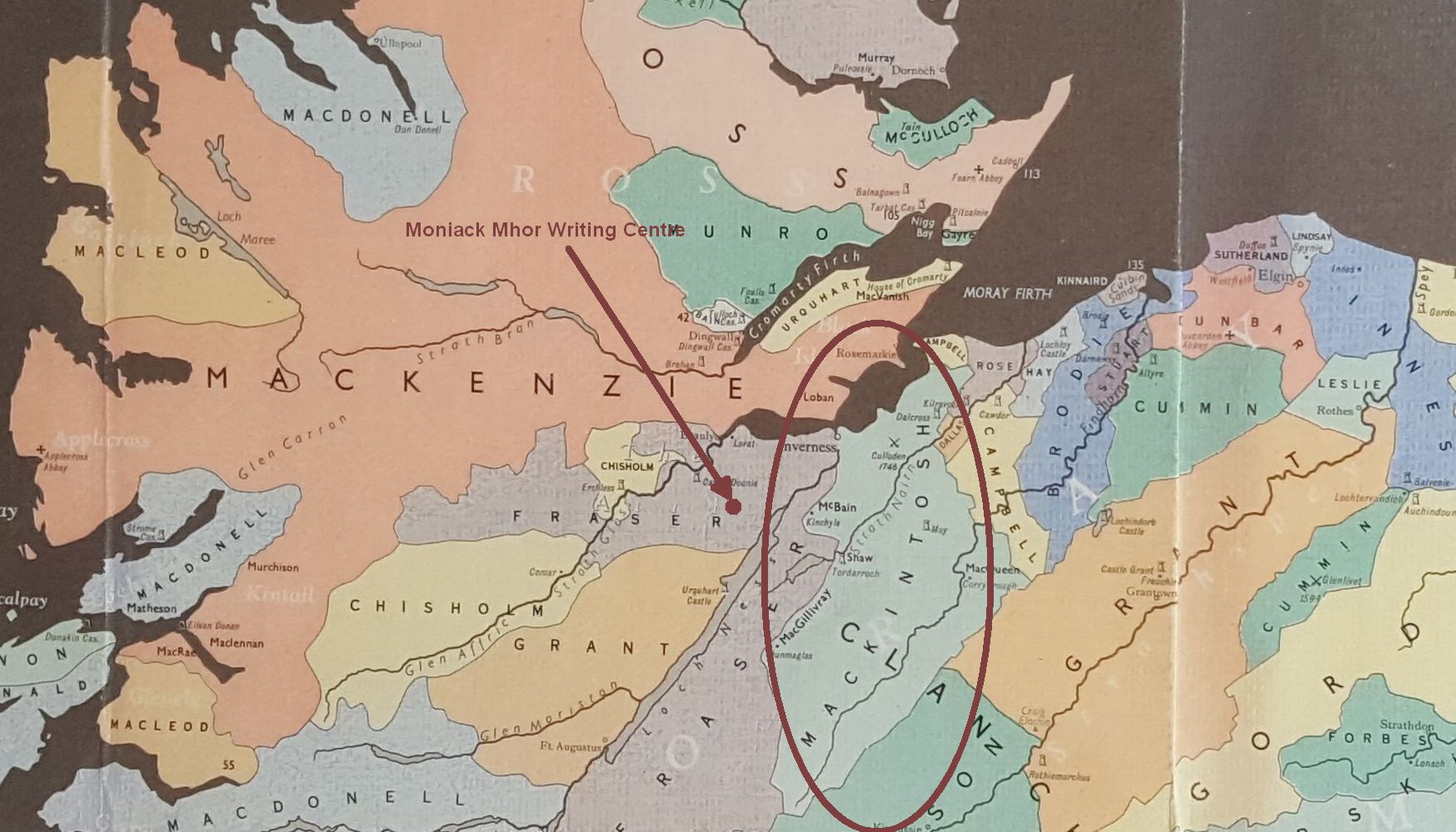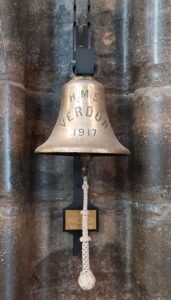 I had the good fortune this past month to be in London. On a visit to Westminster Abbey, this bell caught my eye, hanging near the grave of the unknown warrior. “HMS Verdun” brought to mind an inherited piece of jewelry, a gold cross that came to me on the death of my father’s cousin’s wife, May Patterson.
I had the good fortune this past month to be in London. On a visit to Westminster Abbey, this bell caught my eye, hanging near the grave of the unknown warrior. “HMS Verdun” brought to mind an inherited piece of jewelry, a gold cross that came to me on the death of my father’s cousin’s wife, May Patterson.
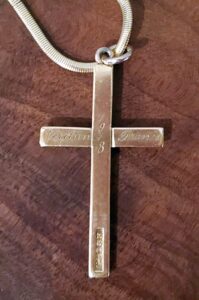 “It’s a cross made from the wedding rings of her first marriage,” Dad said. “He died in WWI.”
“It’s a cross made from the wedding rings of her first marriage,” Dad said. “He died in WWI.”
The cross is heavy — solid gold, it would seem — and bears the inscription Verdun, France, 1918. At first, I wondered if he’d died at sea somehow? Had the HMS Verdun sunk? Back home, I dug deeper. No, the HMS Verdun didn’t sink, it was chosen to carry the remains of the unknown British warrior from France across the English Channel to his final resting place at Westminster Abbey. According to Wikipedia, here’s why:
Verdun was selected to carry the Unknown Warrior across the English Channel because her name would be a tribute to the French people and the endurance of their armies at Verdun in 1916.
1916? Then how had May’s first husband died at Verdun in 1918? On Wikipedia, I clicked on Battle of Verdun, a terrible siege from February 21 to December 18, 1916 the longest battle of the war. Two years later, in the fall of 1918, the tide turned. The American First Army troops had entered the war and joined the French Fourth Army in attacking the Germans “on a front from Moronvilliers to the Meuse on 26 September 1918.” The offensive put the German army in retreat, the beginning of the end.
From previous research, I’d learned May’s full name: Ada May Bowden Herner Patterson. Now I searched for a male Herner married to a female Bowden in Ohio on Family Search, where I discovered a marriage certificate: Leslie Herner married May Bowden on the 23rd of April, 1918. Five days later, he entered into service as an Infantryman in the U.S. Army. So sad. They had just five days together as husband and wife. A search for — “Leslie Ray Herner” 1918 obituary — on Google turned up the rest:
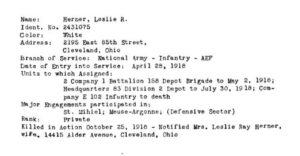
from Roster of Cuyahoga County Soldiers, Sailors and Marines Wounded in Action, Killed in Action, Died of Wounds [or] Gassed.
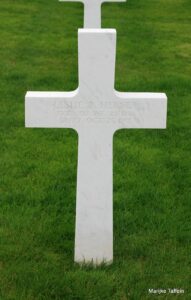 Leslie was 29 years old at the time of his death. May turned 29 a month later. Thirteen years later, she married again but remain childless. She outlived her first husband by 58 years. Leslie Ray Herner is not an “unknown warrior.” His cross stands in the graveyard of the Meuse-Argonne American Cemetery and Memorial. Still, it feels important to remember, albeit 105 years later, their sacrifice and loss, like that of so many other unsung heroes.
Leslie was 29 years old at the time of his death. May turned 29 a month later. Thirteen years later, she married again but remain childless. She outlived her first husband by 58 years. Leslie Ray Herner is not an “unknown warrior.” His cross stands in the graveyard of the Meuse-Argonne American Cemetery and Memorial. Still, it feels important to remember, albeit 105 years later, their sacrifice and loss, like that of so many other unsung heroes.

